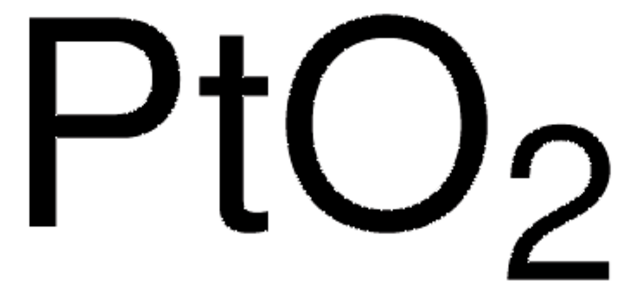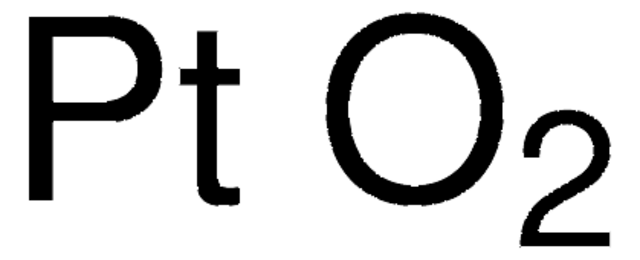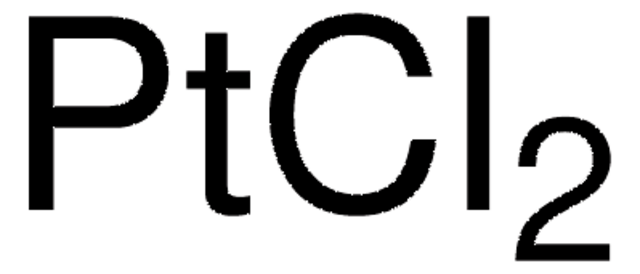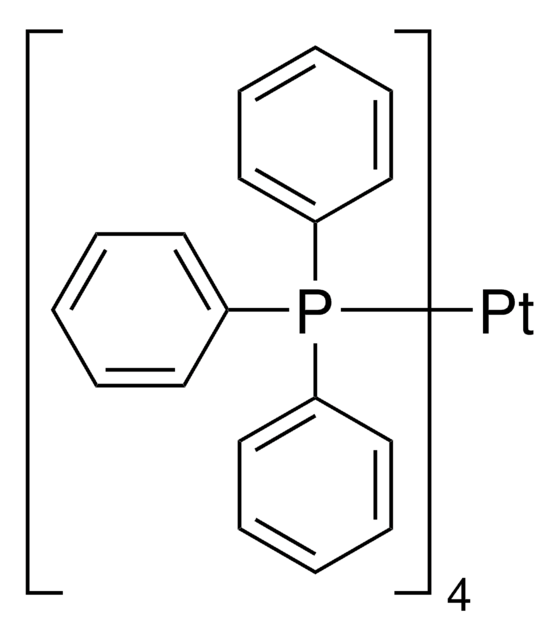206032
Platinum(IV) oxide
Sinónimos:
Adam’s catalyst, NSC 402624, Platinic oxide, Platinum dioxide
About This Item
Productos recomendados
Formulario
solid
composición
Pt, 81-83%
idoneidad de la reacción
core: platinum
reagent type: catalyst
características de los productos alternativos más sostenibles
Designing Safer Chemicals
Catalysis
Learn more about the Principles of Green Chemistry.
sustainability
Greener Alternative Product
superficie
≥60 m2/g
mp
450 °C (lit.)
categoría alternativa más sostenible
, Aligned
cadena SMILES
O=[Pt]=O
InChI
1S/2O.Pt
Clave InChI
YKIOKAURTKXMSB-UHFFFAOYSA-N
¿Está buscando productos similares? Visita Guía de comparación de productos
Descripción general
Aplicación
- Hydrohydrazination reactions
- Oxidation of sugars
- Low-temperature oxidation of carbon monoxide
- Oxygen reduction reaction
- Hydrogenation reactions
- Hydrogenolysis of the cyclopropyl group into an isopropyl group
- Hydroxycyclopropanation reactions
For small scale and high throughput uses, product is also available as ChemBeads (928291)
Palabra de señalización
Danger
Frases de peligro
Consejos de prudencia
Clasificaciones de peligro
Ox. Sol. 1
Código de clase de almacenamiento
5.1A - Strongly oxidizing hazardous materials
Clase de riesgo para el agua (WGK)
WGK 2
Punto de inflamabilidad (°F)
Not applicable
Punto de inflamabilidad (°C)
Not applicable
Equipo de protección personal
Eyeshields, Gloves, type P3 (EN 143) respirator cartridges
Elija entre una de las versiones más recientes:
¿Ya tiene este producto?
Encuentre la documentación para los productos que ha comprado recientemente en la Biblioteca de documentos.
Los clientes también vieron
Artículos
Oxidation and reduction reactions are some of the most common transformations encountered in organic synthesis
Nuestro equipo de científicos tiene experiencia en todas las áreas de investigación: Ciencias de la vida, Ciencia de los materiales, Síntesis química, Cromatografía, Analítica y muchas otras.
Póngase en contacto con el Servicio técnico



![[Pd(OAc)2]3 reagent grade, 98%](/deepweb/assets/sigmaaldrich/product/structures/508/249/99a0ef2c-b77c-4d73-8ed9-0cca05b6b41f/640/99a0ef2c-b77c-4d73-8ed9-0cca05b6b41f.png)






